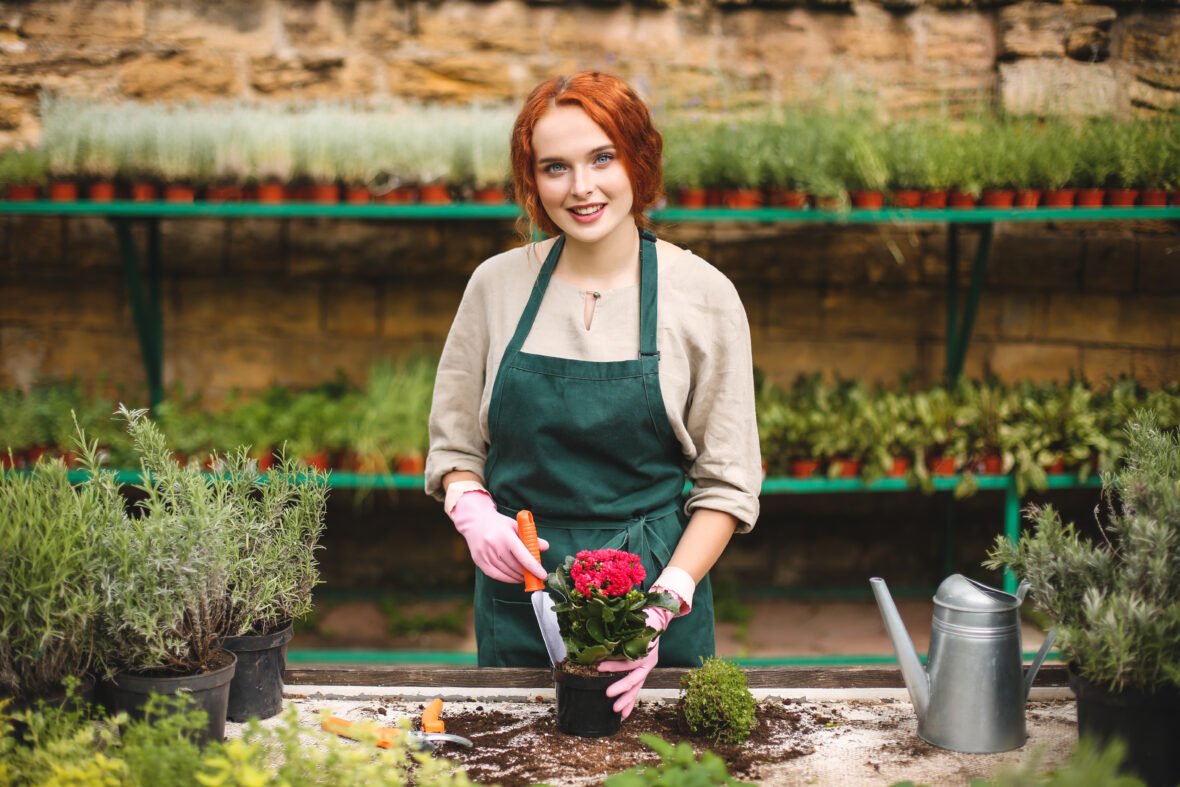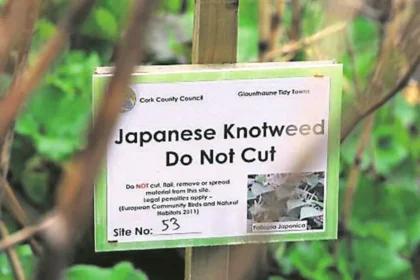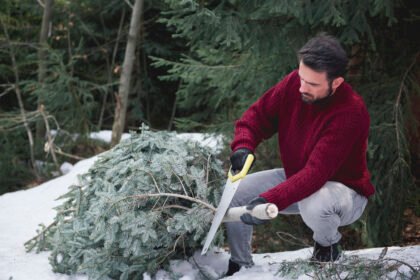Let’s Expand Further in 2024!
I’m going to demonstrate to you how to grow more than you ever have in your garden in 2024. I’m setting a goal for myself this year to replace more of my groceries and grow more of my own food. You too are capable of accomplishing this. You don’t need to worry; I know just how to accomplish that. I’ve shared with you all the information that I typically keep private for my Kitchen Garden Academy students.
Now that you have a free garden calendar to help you organize your complete gardening year, grab some paper and a pen.
This year, I’m determined to assist everyone in increasing the amount of food they cultivate on their own. We ought to everyone be acting in this way. Why? Because after we figured out how to grow our own food, humans became a thriving species—well, sort of thriving. We are a part of that. It tastes much better when you cultivate your own food. Being more in-tune with your food is beneficial to your health, as well as your mind, emotions, and soul. And I’m going to show you that it’s not that difficult to grow some food yourself.
First, Pick Your Why (the Greatest Gardening Year)
Figure Out What Will Motivate You to Garden
The first phase is entirely mental in nature and has nothing to do with the plants or your approach. Start with Why by Simon Sinek is a book that I really like. He asserts that you must consider the why rather than the what or the how.
For what reason is that the case? Because we loathe change as humans. We hate taking on new tasks. Therefore, you must inspire yourself if you truly want to see change (and expanding your garden is undoubtedly a positive shift). And having a WHY is how you may inspire yourself.
Thus, choose your WHY first and foremost. Why do you wish to expand your growth in 2024?
An audio was popular at the time. Eddie Murphy recently posted on Instagram, stating, “It’s been 35 years. If fortune favors you, you will have those 75 winters, 75 springs, 75 summers, and 75 autumns. Save them, please. This quote, ugh, it truly got to my heart. In the garden, seasons are so easy to overlook. Experiencing each season to the fullest means being in the earth with the plants, watching it all happen in real time.
Your WHY can be to take a moment to appreciate each and every one of those seasons. We must not take for granted the possibility that there may only be 75 of those. It is significant to miss one.
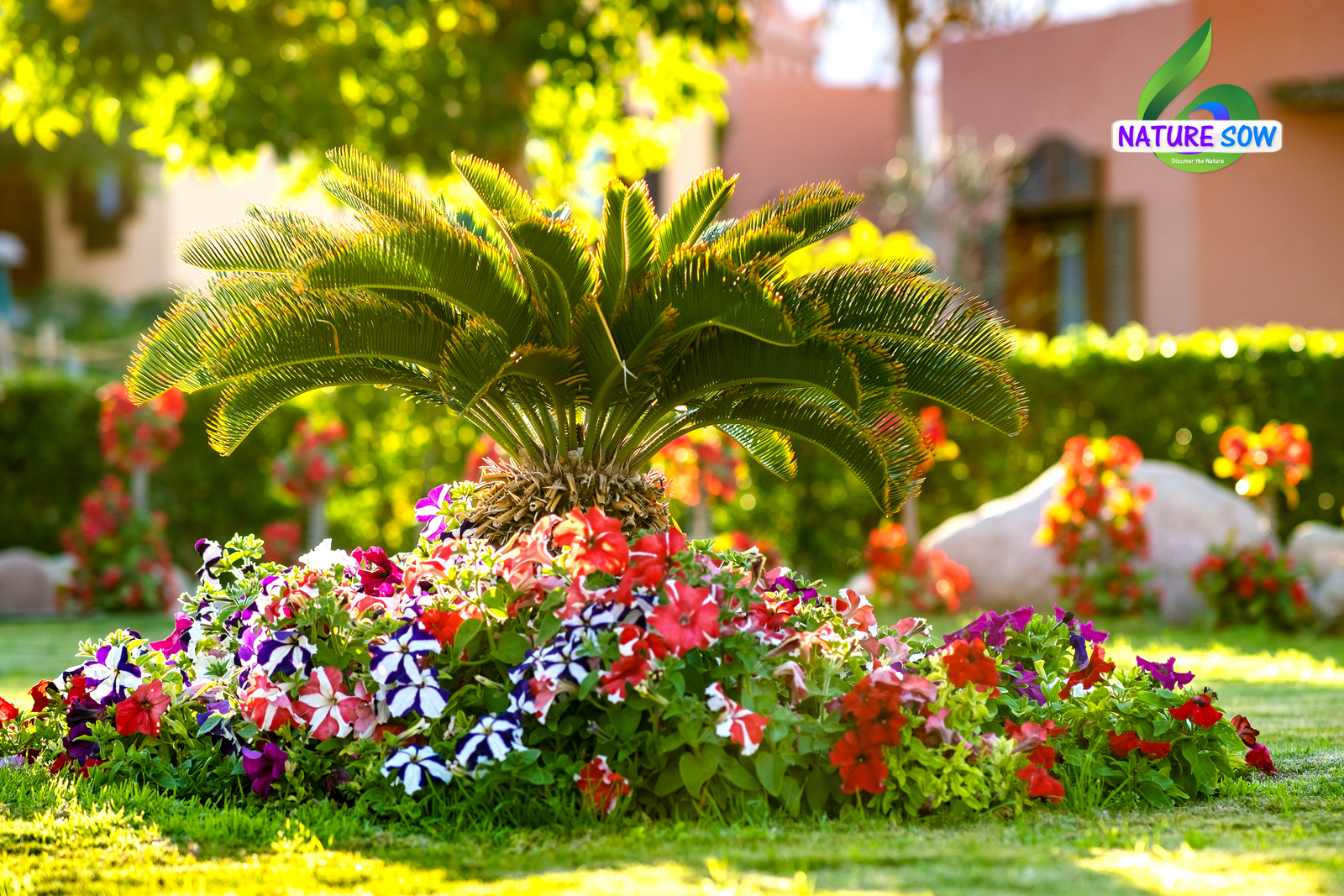
the Greatest Gardening Year
My WHYs
I’ve got two. The first is to maintain the best possible health. Having recently turned 45, my goal is to live past 75 years of age—90 would be ideal. I am therefore officially in my middle age. When I turned 44, I began a project that I termed Project 45. The plan is to concentrate on actions I can do this year that will strengthen, improve, or otherwise enhance the second half of my life. Is there anything I can do to better assist my future self?
Having a garden is essential to maintaining optimal health. Honestly, I believe that planting a garden is the most underappreciated way to become healthier in 2024. People will advise you to exercise, eat healthier, practice meditation more, and spend more time by yourself.to relax and take a break. You could just have a garden, or you could do all those things on your own.
Having a garden encourages physical activity, a healthier diet, time spent outdoors, mental clarity, and lifelong learning. It basically checks every box when it comes to becoming healthy, and it can all take place in that one area—your backyard.
To inspire as many people as I can is my second WHY. As I approached my 45th birthday, I questioned myself, “What is a word that motivates me to work harder and get out of bed in the morning?” And I came to see that inspiring others has been what has sustained me over the years in both my career and as a mother. My goal is to inspire others to take action in their own life by pushing the envelope, demonstrating what’s possible, and helping others view things differently.
I want to shake you out of your rut in 2024, encourage you to walk outside and enjoy your little space—your garden—instead of reading through depressing news articles. the Greatest Gardening Year.
Read Also: I found treasure while digging the soil for the garden
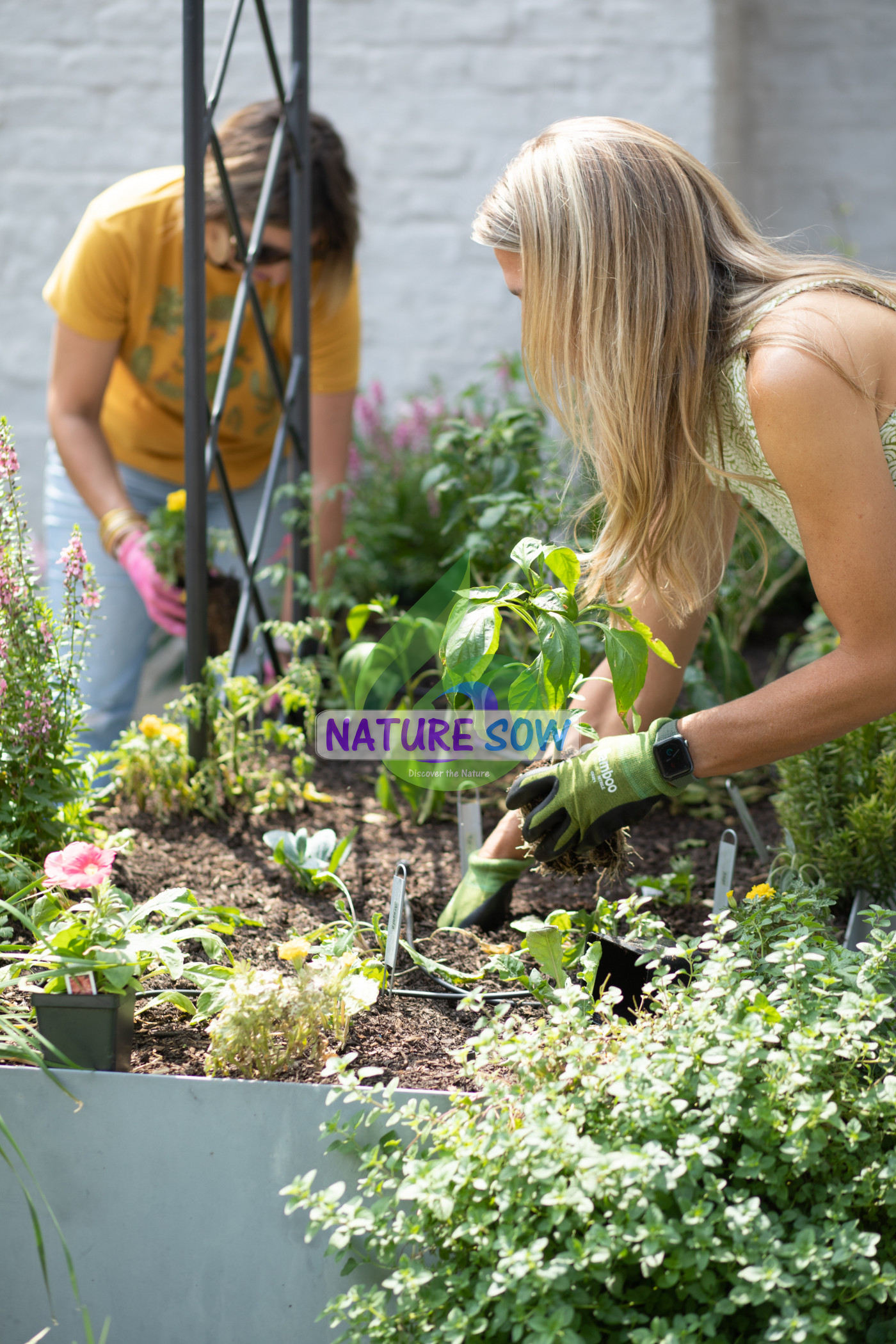
the Greatest Gardening Year
This Is How You Stay Motivated in 2024-2025
After several seasons in the garden, I can tell you that I get off to a great start every January. I possess all the energy and organizing abilities. It’s a hot mess by March or April, and I’ve completely forgotten about all of my January ambitions. I was just talking to my videographer Molly about how, despite our January Team Sprouts mentality, we both stopped growing our own sprouts. It’s easy to grow sprouts. We are both aware of their deliciousness and nutritional value. Nevertheless, we both gave up.
Why? Because we got preoccupied with other things. That is why you should create a WHY. Your WHY acts as a plumb line, bringing you back to center.
Your WHY can be very simple. It could be environmental. Perhaps you wish to look after the birds, bees, or butterflies.
It could be about production. Perhaps you wish to replace a portion of your grocery store produce.It could be cost-effective: Perhaps you want to find a specific quantity of money sprouting in your own backyard.
It could be relational. Maybe you want to connect with your children or your neighbor or your spouse out in the garden space.
It could be aesthetic. Maybe you want more color in your life. You want to have a beautiful place to land your eyes on during the day.
It can be anything you want it to be, but it needs to be something that will motivate you, that will get you out there when you’re busy, when you’re tired, when it’s September and your New Year’s resolutions are far behind you.
Write your WHY down, in a journal if you have one. You’re really at least 50% of the way to growing more in 2024-2025 just by gaining this motivation.

the Greatest Gardening Year
Next, Set Your What
Set Your Goals for the Years
Please only make three goals for the coming year. Now, if you’re anything like me, you could probably think of around three thousand. I always have objectives in mind. It’s execution that’s my issue. The 12-Week Year by Michael Lennington and Brian P. Moran is a fantastic book that I read. They discuss dividing the year into quarters and considering each twelve-week period to be a full year.
By cutting the year short, you may observe outcomes and experience the pressure of time running out. 52 weeks is simply too long to wait for a desire to come true, thus it also enables you to finish cycles more quickly. Your year will become clearer to you much faster if you divide it into quarters. This allows you to improve and rework your plan for the future.
You can choose three objectives for the full year or for every twelve-week cycle in the garden. In either case, your objectives will help you stay on task and remember what’s important. Because I saw someone growing ginger on Instagram, I get what I refer to as “shiny object syndrome” and decide I need to be doing the same. Or I have this sudden urge to plant 1,000 tulips in my yard because I saw someone else do it on YouTube and it looked so lovely. You feel overwhelmed and overburdened by all the new videos you watch, and then all of a sudden you are so overwhelmed by your to-do list that you simply give up.
As kitchen gardeners, food is our passion, thus I strongly advise you to make eating one of your goals. You should choose the other two objectives based on what you know would inspire and sustain you.
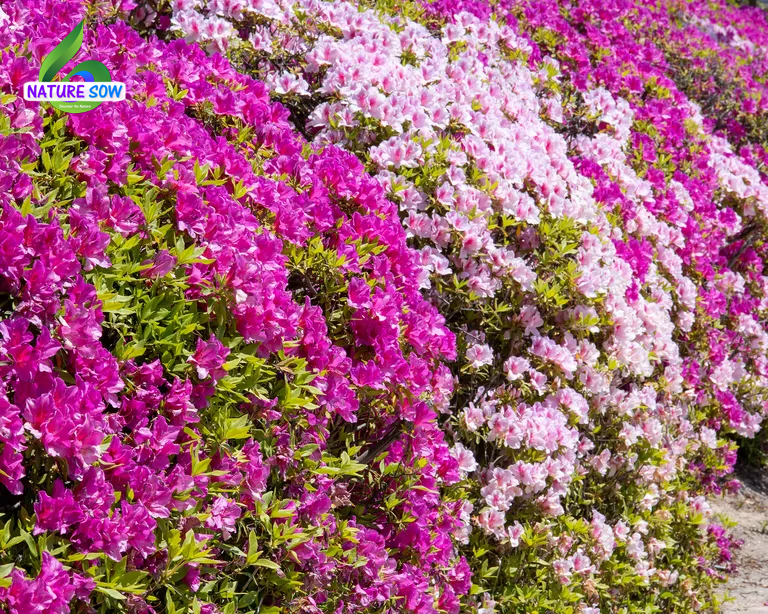
the Greatest Gardening Year
My Goals
Naturally, my first priority is to consume a green that I raised every day of the year, be it kale in the spring, microgreens and sprouts in the winter, arugula and mustard greens in the summer, or spring mix in the fall. To make this happen, I have a plan. Actually, all you have to do is follow the first three steps in my book, Leaves, Roots, and Fruit. So that’s what I want to produce. Will I continue to cultivate beans, tomatoes, and cucumbers? Yes, without a doubt, but I want to make sure that every day I’m eating a green that I grew myself.
I want to grow more from seed next. I planted practically all of my peppers and herbs, and all of my tomatoes from seed last year. I also gained a lot of knowledge about seed beginning. Apart from a few flowers that it’s too late to start indoors, I try to cultivate practically everything from seed for my garden.
Having flowers, flowers, and more flowers is my third ambition. I intended to accomplish this in 2023, but I didn’t. I overplanted my native plant area with grasses and underplanted with flowers. I’m now planning how to increase the number of blooms in my garden for each season. Every day from April through October, I want to have a bouquet, or at least something I can cut and bring inside.
Okay, so pick your three goals—your WHAT—and write them down.( the Greatest Gardening Year)
https://pin.it/1B6rbI4Cf
Lastly, Determine Your When
Figure Out Your Growing Seasons and Planting Dates
You know what you WHY and what. It’s time to examine your WHEN now. Daniel H. Pink’s book When is one of my favorites. It has such strength. He discusses how the when of anything may be just as important as the what, why, and how. That’s absolutely true in the garden, in my experience. You have, too, I’m sure.
To get things started, here’s a passage from my book Kitchen Garden Revival’s “Plan” chapter:
Consider your kitchen garden as a plant guest home. Every visitor has different requirements and preferences, such as how much room to stretch out, how long to stay, and the ideal temperature. Like my kids, plant visitors may be finicky. You can choose which guests may remain in each month and for how long by knowing the temperature, rainfall, and sunshine measures for each month in your climate. Think of this stage as your garden’s reservation calendar, selecting the plants that are welcome to stay and others that might not be a good fit for your home.
I’ve gardened in a lot of various climates, and my experiences in the garden and what the books say I can accomplish in a certain zone are frequently very different. Furthermore, gardening zones designate a first and last frost date as the most important times of the year, which misleads people like you into thinking that plants can only be grown between those two dates. In reality, the frost date only indicates the start and end of the cool season.
I created my kitchen garden seasons system over the years since there’s so much more to the kitchen garden than just zones and frost dates. Understanding the general weather for each month of the year is the best approach to identify your garden’s seasons, which will help you determine what can be done in your particular garden. This activity will be far more precise and beneficial to your particular region than a zone number since it is so much more thorough.
Sounds good? Let’s assess your seasons together.
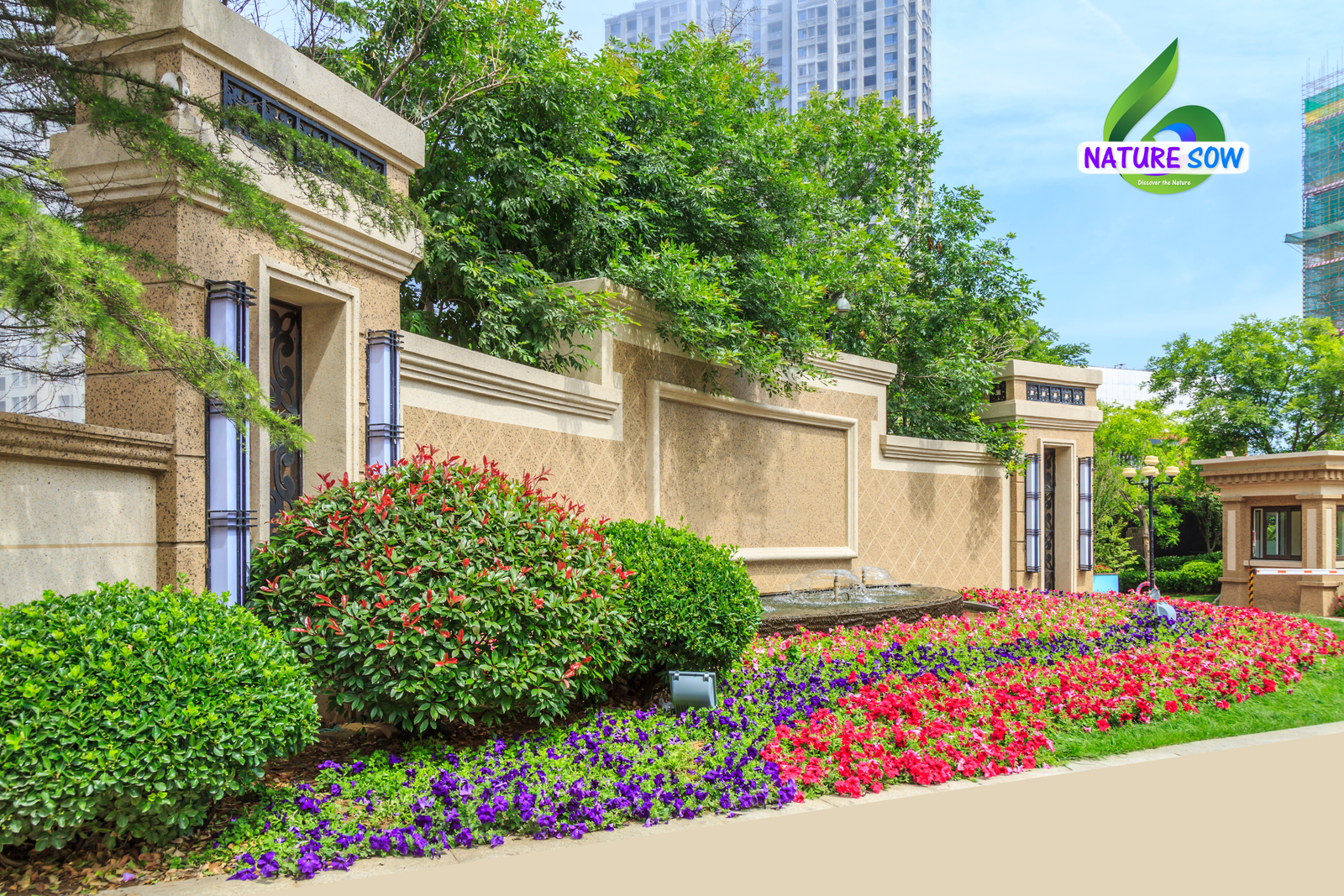
the Greatest Gardening Year
Step One to Understand Your Garden Seasons
First, find out which month in 2024 you may expect your final frost. April is when I expect to see my final frost in Nashville (it was February in Houston and May back in Chicago).
Next, find out which month is expected to bring the first fall frost. In Nashville, I expect to see my first frost in late October (it was December in Houston and early October in Chicago).
Step Two to Understand Your Garden Seasons
You can now label your garden seasons for the entire year using your first and last frost months.
Understand?
WARM SEASON
Let’s start with your last frost date. Whenever that occurs (hopefully it’s before June if you live in the Northern Hemisphere; otherwise, yikes!), that’s when your warm season starts. The month you expect your first frost is when your warm season ends. Got it?
HOT SEASON
Depending on where you live and how you garden, the middle of those two months will seem different. The months between your last frost and your first frost, if you live in a cold climate like Chicago, are your warm season. It will never get really hot.
Living in a gentler climate, such as Nashville, you may have a month in July or August when the temperature becomes a bit too high for the warm-season plants.
Living in a warm environment such as Houston means that you will experience a “hot season” between two warm seasons, which typically lasts from June to August. This indicates that it will be extremely hot—virtually unbearably hot—for a while because daily highs will often be in the nineties. But then, not everyone experiences a hot season.
COOL SEASON
Your cool season typically starts about three months before your warm season begins, so in the late winter or early spring. In other words, your cool season occurs during those three months leading up to your last frost date. The three months after your first frost date are also cool season months.
COLD SEASON
The average maximum temperature throughout the winter season is hardly ever above freezing.
You won’t experience a chilly season if you live somewhere warmer, like Houston. For your winter months, you’re only going to chill around during the cool season. There’s a chance you have some frost, but not much.
If you live somewhere with a warmer temperature, such as Nashville, you may have one or two months in January or February that may be categorized as the cold season. I hope not to have to endure another Nashville winter like I haven’t.
Moving farther north to cities like Chicago will bring you into the colder months, which last from December through February. The cold season lasts for a good three months.
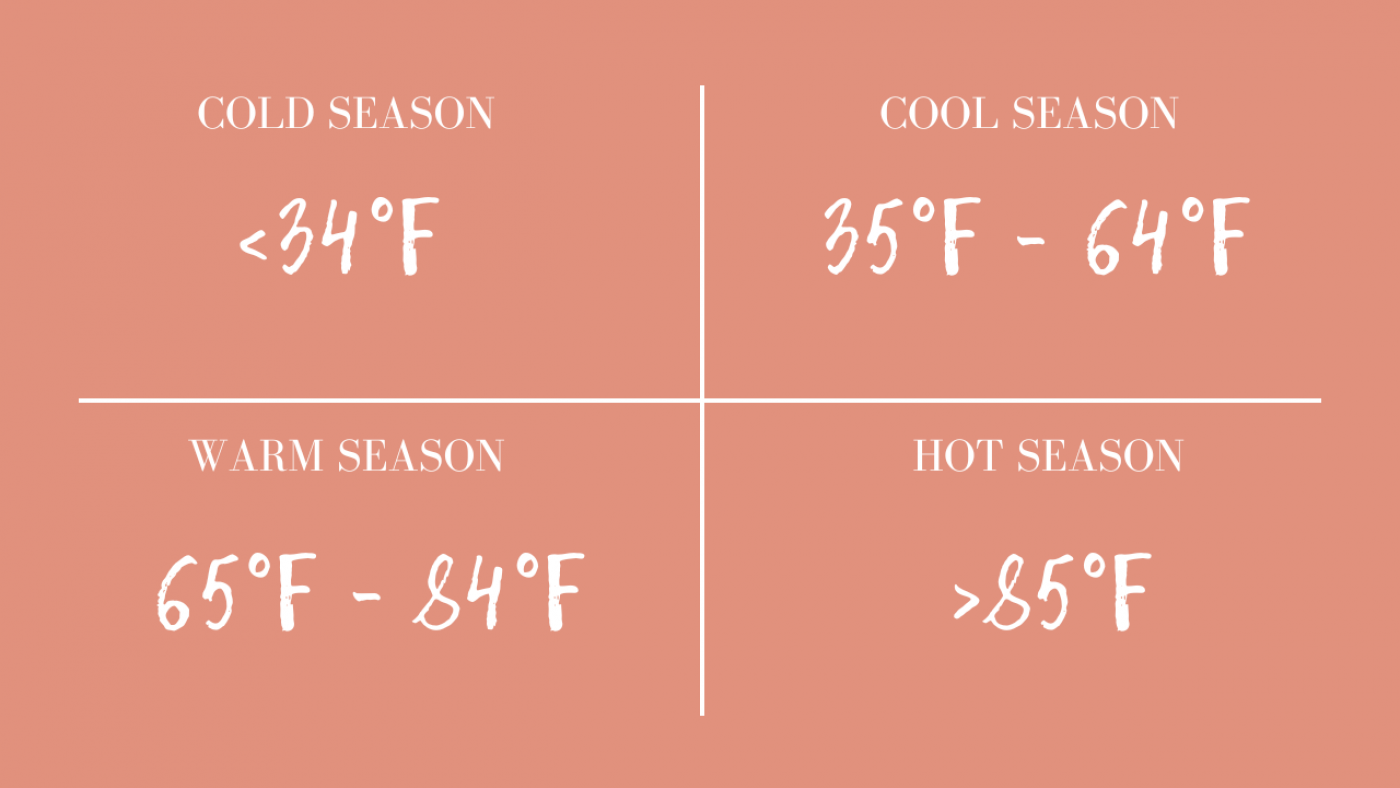
the Greatest Gardening Year
Step Three to Understand Your Garden Seasons
See how seeing the complete year is made easier when you are aware of your seasons? What I refer to as the Arc of the Seasons is the progression from one season to the next: cold, cool, warm, hot, warm, cool, and cold.
In Houston, an average year looks like this: The year starts in the chilly season. You enter the warm season in March and the hot season is during the summer. You return to the warm season in the fall, and in December you begin the chilly season over. Warm, hot, cool, warm, and cool.
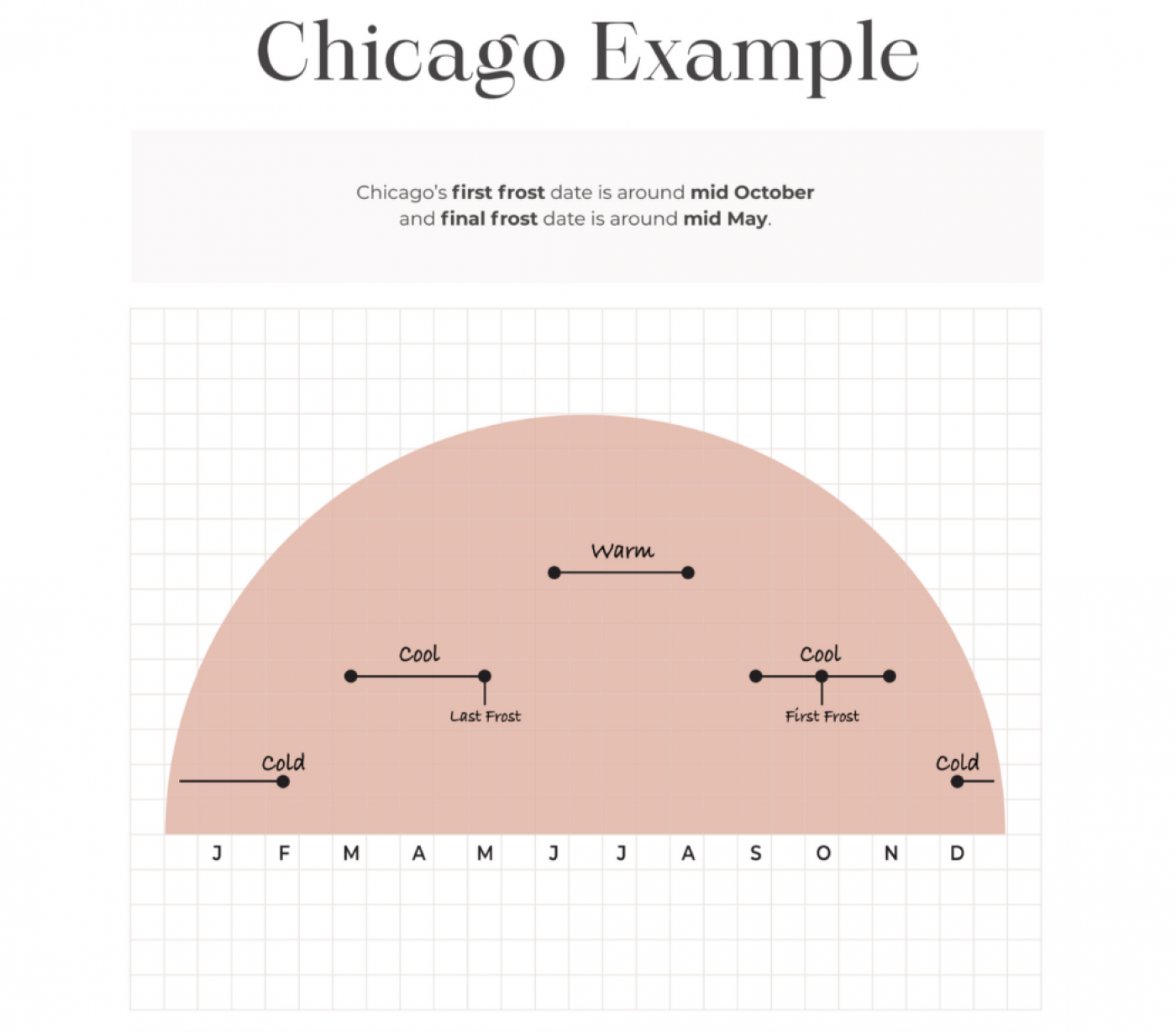
One Year in the Garden
I’m going to lay out what this five-month process looks like for each and every month in the garden in Nashville, starting with January.
JANUARY
Let’s say you already have garlic, tulips, rhubarb, and asparagus planted in the garden—these plants can all survive the cold season. You also have herbs and peppers you’re overwintering indoors. Your focus this month is tending these plants that you already planted.
FEBRUARY
Even if it’s bitterly cold outside, you may still harvest from the herbs you brought inside and other indoor growing initiatives you may have begun, such as sprouts or microgreens. You are preparing for the chilly season as you harvest your cold-season crops. Greens, peas, fava beans, and root crops will soon be under your grow bag.
MARCH
You should start planting for the chilly season this month. We’ll be moving the indoor plants you grew in February outside so they can get some springtime sun and thrive and flourish. Unbelievably, while you plant, you’re also getting ready for the warm season, which starts in only 60 days. Your huge warm-season plant seeds will be started inside.
APRIL
You’re taking care of your garden’s cool-season plants in the fourth month of the year. In addition to making sure the plants are developing to their full potential, you are also trimming and keeping an eye out for pests. As soon as there is no longer a chance of frost, you plant out your warm-season plants during this period of care. Essentially, after your final frost date has passed, you’ll be able to discover vacant spaces in your garden to accommodate your warm-season plants.
MAY
Finally, it’s time to harvest your plants for the chilly season. Although you have been gathering from these plants for the previous few months, the true garden season begins in May. There are an abundance of abundant crops in the garden for your enjoyment. Every time you pull out a cool-season plant, you’re clearing space for additional warm-season plants. In addition, you’re taking care of the warm-season plants that were added to the garden the month before. It’s now their turn to receive trellis support, fertilization, pruning, and insect protection.
JUNE
Now is the time to remove any last remnants of the chilly season plants from the garden. The previous frost was further away, and plants that prefer cooler weather are no longer suited to these temperatures. After harvesting your final few bits, remove those plants from the garden. You may now let your warm-weather plants to take control. With ample space for them to thrive, you may start gathering produce from them.
JULY
You’ve passed the summer solstice by July. The days are already as long as they can get, and we’re quickly returning to shorter, crisper days. This month, collecting your warm-season plants is the main priority. There should be something to harvest every day this season, but some will take longer to produce than others. It’s also time to start your cool-season plants indoors while you’re harvesting these warm-season ones. How? Indeed, in a true sense.
AUGUST
August is still a good time to harvest from your warm-season plants. These bushes grow fruit for ages, so I really gave you three months to concentrate on harvesting during the warm season. It’s time to switch from warm to cold season crops, so while you’re harvesting, plant your cool season plants. Every time you uproot a plant or harvest from it, you are creating space for the plants that will grow in the next season. Greens, carrots, celery, parsley, dill, cilantro, and radishes will all be among the new plants. These should all be placed in the garden surrounding the warm-season plants that you intend to harvest.
SEPTEMBER
Now is the time to remove those warm-season plants, as September is the ninth month of the year. When harvesting, be sure to gather as much as possible from the plants, and remove them from the garden as soon as their ideal growth season has passed to provide space for cool-season plants. When it comes to cool-season plants, attention is key. Pruning, monitoring for pests on the leaves, trellising your peas, and ensuring the success of these cool-season plants are all part of your efforts.
OCTOBER
It’s time to gather in those plants that thrive in the chilly weather, such as fava beans, peas, and root crops. The days are becoming shorter and colder as you approach the coldest time of year—your first frost of the year—and you’re making the most of every second of it.
NOVEMBER
It’s time to get rid of your cool-season plants—at least the ones that don’t appear to be very healthy and won’t make it through the winter. Start getting ready for whatever it is you want to do to stay warm throughout the winter. Perhaps you add perennials like fruit trees, rhubarb, or asparagus to your raised beds, or you put some garlic there. Take some of your peppers and herbs indoors for the winter.
DECEMBER
The little things you’ve set up for the winter months should be tended to in December. Ensure that the garlic you plant is not in direct sunlight. Take care of the spinach growing in a greenhouse or cold frame.
When January rolls around, we’re back at the beginning of the year, ready to tend to those December seeds you sowed. And that’s what the entire year is like.
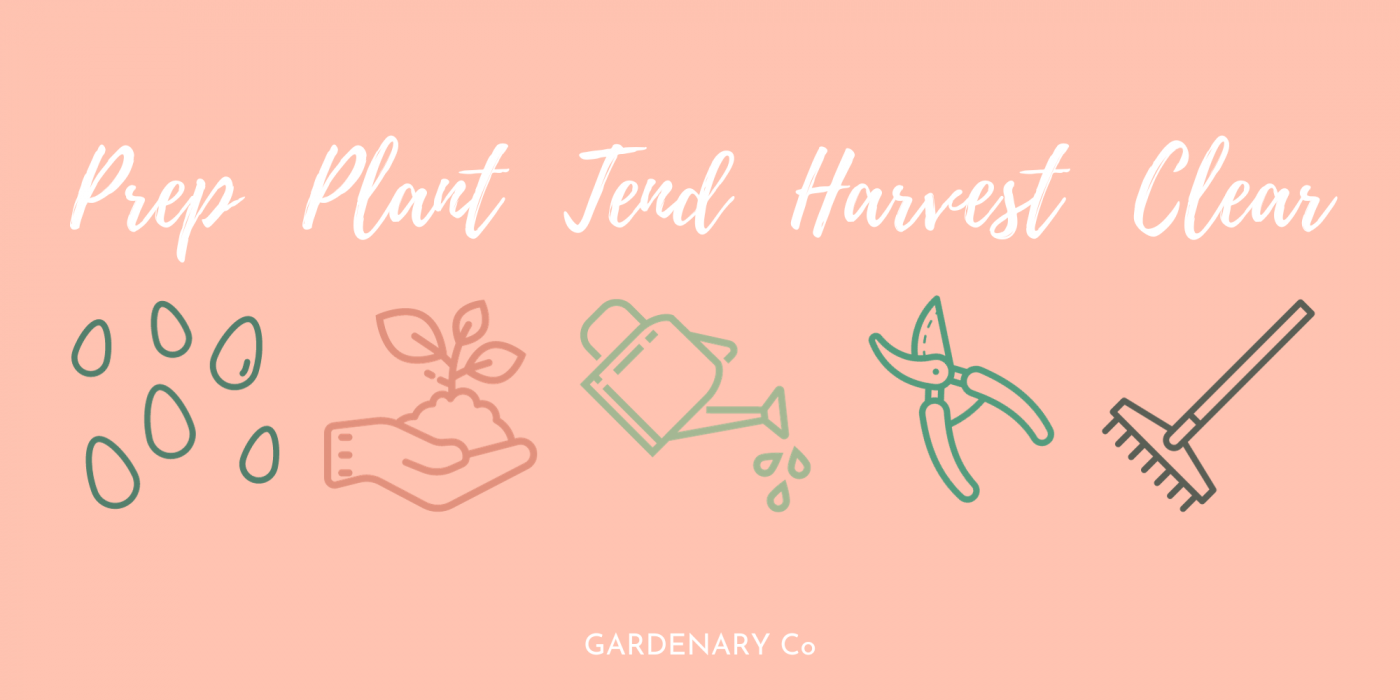
That Is How You Plan Your Kitchen Garden for the Entire Year
Here’s how you may increase your growth in 2024 step-by-step. As you can see, even in an area that experiences frost from the end of October through April, there is always something to grow, manage, and harvest. Every month of the year has so much to be planted and grown, even if there is frost or snow on the ground.
Apply these actions to your local location. Put the following on the labels for each month: prepare, plant, tend, harvest, and clear for the warm and cool seasons.
As I went through my Nashville example, I hope you were able to see how the seasons flow into one another. You’re cleaning the old season while you plant the next. You’re preparing for the following season as you cater to the current one. You plant or cultivate for the next season while you’re reaping the rewards of the previous one. Furthermore, you are caring for the plants of the following season while you harvest from the current one.
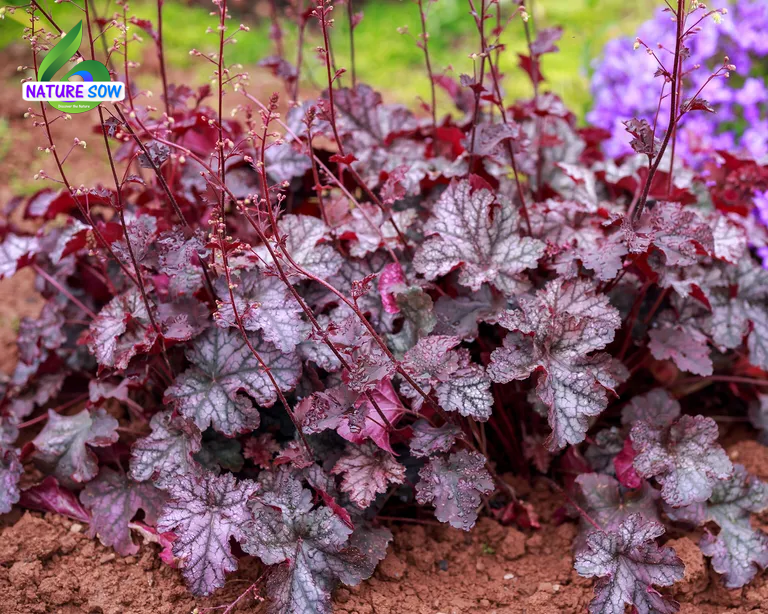
You Can Grow Way More Months of the Year Than You Might Think
This is how we will continue to expand for many years to come, not just in 2024. Timing is the key to making the most of your area and producing more food in your own garden that you personally cultivated. Never allow the garden to become barren; instead, grow every plant within its ideal growing season.
When I initially began gardening in Nashville, I would only plant throughout the summer, which is about June through August. However, I discovered that June and August were the most difficult months to garden in Houston after moving there. excessive temperatures, excessive humidity, and erratic rain were all present. I recall thinking, “Whoa, if I only have June through August left to garden here in Houston.”
I began experimenting with growing over the entire year by planting in the spring and continuing into the fall. And I discovered that there was, in fact, a lot more room for growth—every month of the year. It’s actually only a thin slice of possibilities, this summer.
That’s the attitude I brought with me to Chicago. I disregarded the advice of my neighbors to “wait until after Mother’s Day to plant anything.” I tried planting and growing something in the garden every month, putting the ideas I’d learned in Houston into practice. And from February through December, I had something to harvest from my Chicago garden, which makes me quite proud. The garden was naked just in January of this year, and that was only because I decided without using frost cloth or cold frames in the garden. Even in January, I could have had produce from the garden to harvest if I had used covers.
After a 12-year absence, I returned to Nashville, bringing my life full circle. I can’t be stopped now. Even at a location where there is a five to six month probability of frost, I am able to grow something every single month of the year. I can grow much more in Nashville if I could grow that much in Chicago.
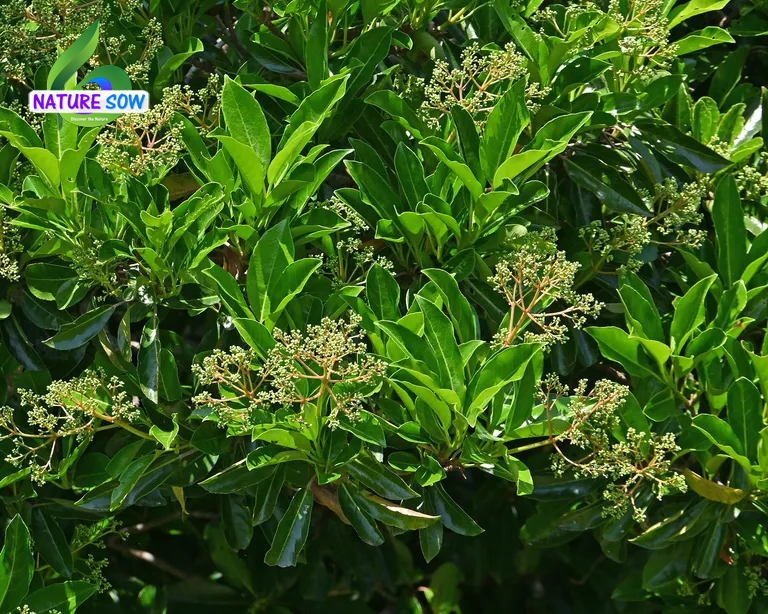
Time to Plan Out Your 2024 and 2025 Garden
I acknowledge that I delved deeply into the specifics of determining when you should be in the garden. I want everyone to have access to this information so that this year we may all plant more in our gardens.
Make sure to grab the free calendar beforehand in case there are any questions about the five-month procedure. You should be able to visualize how the process will unfold in your garden if you use that as a guide.
I’m eager to learn about the objectives you’ve set for yourself and the reasons for your desire to develop further in 2024. If you haven’t already, come find me on Instagram at @gardenaryco and tell me about your gardening aspirations.heated, when it cools down, and when things don’t go as planned. If we have a clear understanding of our WHY and our objectives now, nothing can prevent us from expanding even more in 2024 and 2025!

